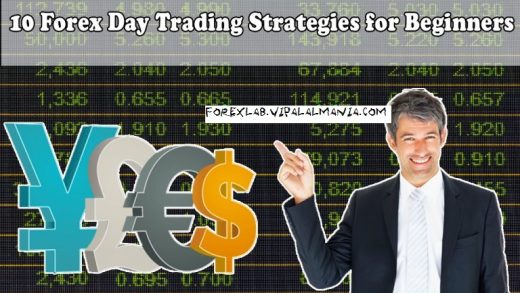A forex trading strategy is a technique used by forex traders to determine whether to buy or sell a currency pair at a specific time
Forex trading strategies can be based on technical analysis and fundamental events based on news. A trader’s forex trading strategy usually consists of trading signals that lead to a buy or sell decision. Forex trading strategies are available on the internet and can be developed by the traders themselves.
With automated systems, the trader develops an algorithm that finds trading signals and executes trades independently. The latter systems also take human emotions out of the equation and can lead to improved performance.
Traders should be cautious when purchasing off the shelf Forex trading strategies as it is difficult to verify their proven track record and many successful trading systems are kept secret.
Create a forex trading strategy
For example, they may find that a particular currency pair has a tendency to bounce off a specific support or resistance level. You can choose to add second elements that will improve the accuracy of these trading signals over time. For example, they can require the price to bounce off a certain support level by a certain percentage or number of pips.
An effective forex trading strategy consists of several components:
Market Selection:
Traders need to decide which currency pairs to trade and be an expert at reading those currency pairs.
Position Size:
Traders should size each position to control the amount of risk taken on each individual trade.
Entry Points:
Traders should establish rules governing when to enter a long or short position in a particular currency pair.
Exit Points:
Traders should develop rules that tell them when to exit a long, short, or even a losing position.
Trading Tactics:
Traders should establish rules for buying and selling currency pairs as well as choosing the right execution techniques.
Traders should consider developing trading systems in software that make it easy to automate executing orders and following rules. Additionally, these apps allow traders to test trading strategies to see how they have performed in the past.
When is it time to change strategies?
A forex trading strategy works well when traders stick to the rules. If the strategy proves unprofitable and does not produce the desired results, traders can consider the following before changing their game plan:
Match risk management to trading style: When the risk/reward trade-off is off, it may be time to change strategies.
Evolving Market Conditions: A trading strategy may depend on specific market trends. So if these change, a particular strategy may become obsolete. This may indicate the need to make adjustments.
Understanding: If the trader doesn’t fully understand the strategy, there’s a good chance it won’t work. In the event that a problem arises or the trader does not know the rules, the effectiveness of the strategy will be lost.
While changes can be good, changing your forex trading strategy too often can be costly. If you adjust your strategy too much, you can lose.
Forex Leverage:
One of the reasons so many people are drawn to forex trading compared to other financial instruments is that you can usually get much more leverage with forex than with stocks.
While many traders have heard of the word “leverage,” few know its definition: how leverage works and how it can directly affect your bottom line.
The concept of using other people’s money to complete a transaction can also be applied to the forex markets.
In this article we will use the VoExamine the benefits of using leveraged capital to trade and explore why using leverage in your Forex trading strategy can be a double edged sword.
determine leverage
Leverage is borrowing an amount of money needed to invest in a specific thing. Forex trading offers high leverage, meaning for the initial margin requirement, traders can build and even control a large amount of money.
Leverage based on margin
To calculate leverage based on margin, divide the total value of the transaction by the amount of margin to be provided:
Leverage on margin = the total value of the deal / desired margin.
the required margin is 1,000 USD. Thus, the leverage based on margin is 100:1 (100,000 / 1,000). With a margin requirement of just 0.25%, leverage on a margin basis is 400:1 using the same formula.
However, leverage based on margin does not necessarily affect risk. Whether a trader is required to put up 1% or 2% of trade value as marginIt does not affect their profits or losses.
This is because an investor can always allocate more than the required margin to any position. This indicates that real leverage, not margin-based leverage, is the strongest predictor of profit and loss.


